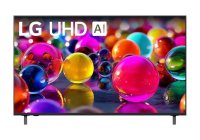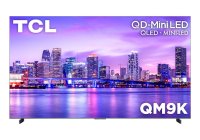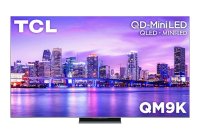How Many HDMI and USB Ports Do You Really Need in a Smart TV?
When purchasing a new smart TV, one detail that’s often overlooked is the number of HDMI and USB ports it has. But these ports are essential for connecting devices like gaming consoles, streaming sticks, soundbars, and even external storage. Choosing a TV with too few ports can leave you scrambling for adapters or constantly switching cables. So, how many HDMI and USB ports do you really need in a smart TV? Let’s find out!
Understanding HDMI and USB Ports
HDMI Ports
HDMI (High-Definition Multimedia Interface) ports allow you to connect external devices that transmit both audio and video signals. They are crucial for modern entertainment setups, as most devices like gaming consoles, Blu-ray players, and streaming devices require HDMI connections.
USB Ports
USB (Universal Serial Bus) ports are used to connect storage devices, keyboards, webcams, and other peripherals. USB ports are also handy for charging devices, such as your smartphone or wireless headphones.
Determining How Many HDMI Ports You Need
Gaming Consoles
If you’re a gamer, you’ll likely need at least one HDMI port for your console, such as a PlayStation 5, Xbox Series X, or Nintendo Switch.
Streaming Devices
Many smart TVs already have built-in streaming apps, but if you use an external device like a Roku, Amazon Fire Stick, or Apple TV, you’ll need an additional HDMI port.
Soundbars and Home Theater Systems
For a better audio experience, you’ll likely connect a soundbar or home theater system via HDMI (preferably using the HDMI ARC/eARC port).
Cable or Satellite Box
If you still use a traditional cable or satellite box, that’s another HDMI port required.
Laptops or PCs
For occasional big-screen presentations, gaming, or streaming, you may want to connect your laptop or PC, which will require one more HDMI port.
Recommended Number of HDMI Ports
For most households, 3–4 HDMI ports should suffice:
One for a gaming console
One for a streaming device
One for a soundbar/home theater system
One spare for future needs
Determining How Many USB Ports You Need
External Storage Devices
If you plan to play movies, music, or photos directly from a USB drive or external hard disk, you’ll need at least one USB port.
Webcams and Accessories
For video calls or streaming, a webcam may require another USB port.
Keyboards and Mice
If you use a keyboard or mouse for navigating apps or browsing, you’ll need another USB connection.
Charging Devices
Many people use USB ports on their TV to charge devices like phones, wireless headphones, or remote controls.
Recommended Number of USB Ports
For most users, 2–3 USB ports are ideal:
One for media playback or storage
One for accessories like webcams or keyboards
One spare for charging or future needs
Other Considerations
HDMI ARC/eARC Compatibility
If you plan to use a soundbar or home theater system, ensure your TV has an HDMI ARC or eARC port, which allows audio to flow both ways for superior sound quality.
USB Port Versions
Check if the USB ports are USB 3.0 for faster data transfer, especially if you’ll be using large external drives.
Future-Proofing
As technology evolves, you may add more devices to your entertainment setup. It’s better to have one or two extra ports than to fall short later.
Special Cases
Minimalist Setups: If you use only built-in apps for streaming and don’t have external devices, 2 HDMI ports and 1 USB port may be enough.
Heavy Tech Users: For tech enthusiasts with multiple gaming consoles, sound systems, and external devices, look for a TV with 4–5 HDMI ports and 3–4 USB ports.
Final Thoughts
The number of HDMI and USB ports you need in a smart TV depends on your usage habits and the devices in your entertainment setup. A general rule of thumb is to choose a TV with at least 3 HDMI ports and 2 USB ports to cover your current and future needs.
Don’t let a lack of ports hold you back from enjoying your smart TV to its fullest potential. Plan ahead, think about how many devices you’ll connect, and make sure your next smart TV has the connectivity you need!



